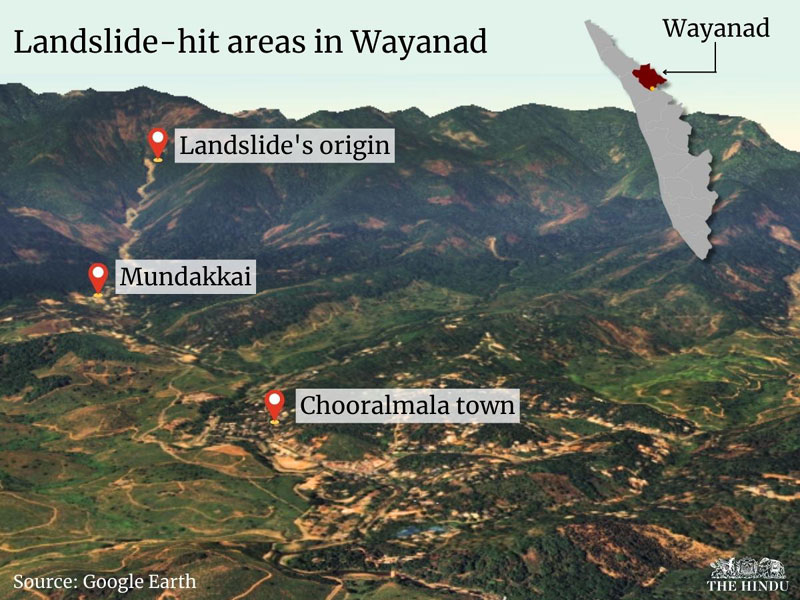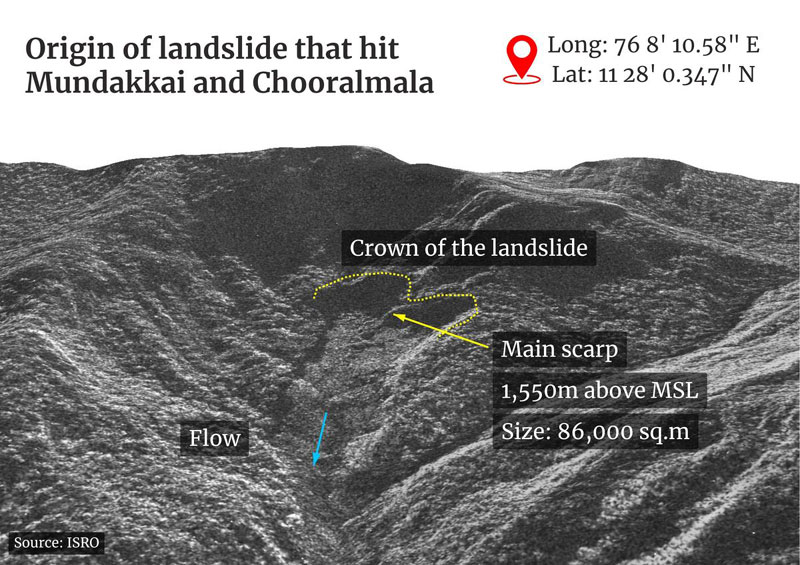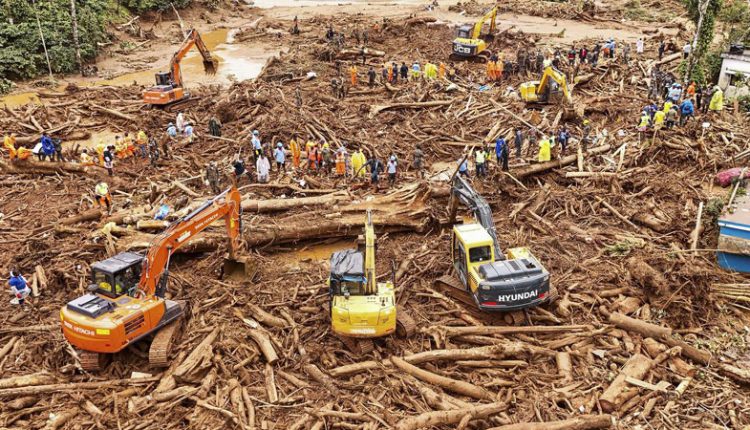‘Amid chaos of devastation, the silent realm of ghosts prevails everywhere,’ these alarming events have demonstrated that the fictional narratives of LayaA S are now reflective of reality. BibhutiPati has provided an in-depth study from various disaster-stricken areas and has conveyed his observations from the ground level.
The fictional narrative “Tragedy of Desire,” (AgrahathinteDuranubhavam) authored by 14-year-old school 11th standard girl LayaA S in Wayanad, has taken on a prophetic dimension. In this tale, two young girls receive a warning from a talking bird, urging them to escape their village due to an impending peril. The author’s personal experience with loss, as her father perished in the Wayanad floods, adds depth to the story, which was featured in the school’s digital magazine, VellarmKallukal. Analysis
In the aftermath of catastrophic events, the survivors are left to mourn and tally their losses. In the villages of Wayanad, which were ravaged by last month’s landslides, 17 families have no one remaining to honor their memory. A total of 179 bodies have been recovered and identified during the search efforts. Among the deceased, 17 families comprising 65 individuals were entirely lost in the calamity, with no survivors, as reported by Kerala Chief Minister PinarayiVijayan to the press.
An affidavit submitted by Advocate General K. GopalakrishnaKurup to the Kerala High Court confirms that 231 individuals have been declared dead, while 128 remain unaccounted for following the disaster that struck the Punchirimattom-Mundakkai-Chooralmala villages in Wayanad district. Of the deceased, 178 bodies have been returned to their families for burial, while 53 unidentified bodies and 212 body parts have been interred by the district administration in Puthamala.
Recent landslides and flooding have resulted in the loss of hundreds of lives, with many individuals still unaccounted for in the affected regions of Himachal Pradesh, Uttarakhand, Delhi, Sikkim, as well as certain areas in the North-Eastern states and Rajasthan.

The sixth report from the Intergovernmental Panel on Climate Change (IPCC) has issued a stark warning regarding the increasing frequency of climate-induced disasters in the subcontinent. It emphasizes the heightened vulnerability of mountainous regions, particularly the Himalayas, as well as coastal areas of India.
The report indicates that the occurrence of extreme weather events is expected to rise significantly due to human-induced climate change. Intense rainfall over shorter durations will lead to increased water runoff, resulting in various disasters affecting both India’s urban and rural areas.
The relationship between floods and agricultural fertility is noteworthy. While flash floods in mountainous regions are not a recent phenomenon, their frequency has escalated in recent times. Historically, floods originating from the mountains have played a crucial role in enriching the plains, with the fertile alluvial soils of the Gangetic basin being a testament to such past events. Therefore, flash floods in mountainous areas should be recognized as a vital component of the broader ecological system.
While floods are a natural phenomenon, the increasing loss of lives and property raises an important question. This inquiry must be examined through a developmental lens. To illustrate this point, we can consider two examples: the developmental path in the Himalayan region and the urban development strategies implemented throughout India.
The prevailing paradigm of urbanization and urban expansion is influenced by the long-standing concept of cities functioning as engines of economic growth, a notion that has persisted for four to five decades. When this principle is adopted, it prompts critical inquiries regarding the nature of growth and its implications for urban ecology and the environment. Nevertheless, the trajectory of growth within urban areas is predominantly shaped by economic considerations, with land serving a pivotal role in this process.
Over the past thirty years, various projects related to mobility, housing, and civic amenities have been primarily driven by the aim of utilizing the surplus generation capacities of urban areas. Notably, initiatives such as the construction of flyovers, road expansions, smart city developments, and other infrastructure endeavors have proceeded without adequate consideration for essential ecological factors and urban commons, including open spaces, water bodies, pedestrian pathways, playgrounds, and parks. The recent flooding in Delhi, which occurred despite significant rainfall, led to widespread damage attributed to blocked drainage systems and the appropriation of drainage areas for the construction of flyovers and metro lines, as well as the encroachment on public spaces.

A recent study highlighted that cities previously unaccustomed to flooding suffered severe impacts from rainfall due to the implementation of smart city mission projects.Within the framework of economic growth, even natural landscapes are often viewed through the lens of commodification. A pertinent example can be found in the hydropower initiatives in the Himalayas. Researchers advocated for the adoption of run-of-the-river dam technology along with small and micro hydro projects, asserting that this approach would mitigate environmental repercussions.
Nevertheless, the recent flash floods have revealed that riverbeds, which had been transformed into waste disposal areas due to the diversion of rivers through mountainous terrains, became highly susceptible to damage. The small and micro hydro projects suffered extensive destruction from the rainfall on the mountain summits, resulting in significant devastation in the Rampur and Kullu districts of Himachal Pradesh.
In the late 1970s, anthropologist Thomson M highlighted that high sequestration levels in the Himalayas do not guarantee protection against landslides, even with a fully developed forest canopy, if the terrain is inherently susceptible. It is imperative for both Union and state governments to take immediate action by completing a comprehensive mapping of the mountainous regions and establishing a vulnerability atlas. In areas identified as vulnerable, a strict ‘no means no’ policy regarding habitat development should be implemented.
Additionally, there is a need to reassess the excessive exploitation of the mountains for the construction of four-lane highways and hydropower projects. Strengthening early warning systems, along with enhancing the capacity of communities and district administrations for effective evacuation responses, is crucial. Geological and hydrological mapping of towns should be conducted to inform future development trajectories. Furthermore, empowering individuals, communities, and urban local bodies in zoning initiatives, as well as localizing designs based on climate risk assessments, is essential.

